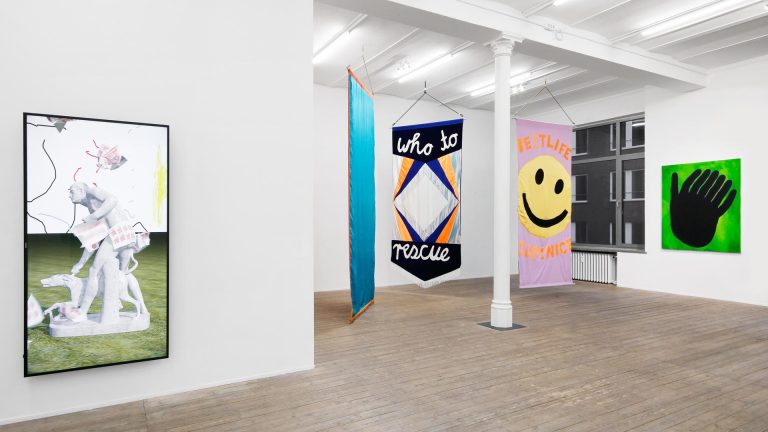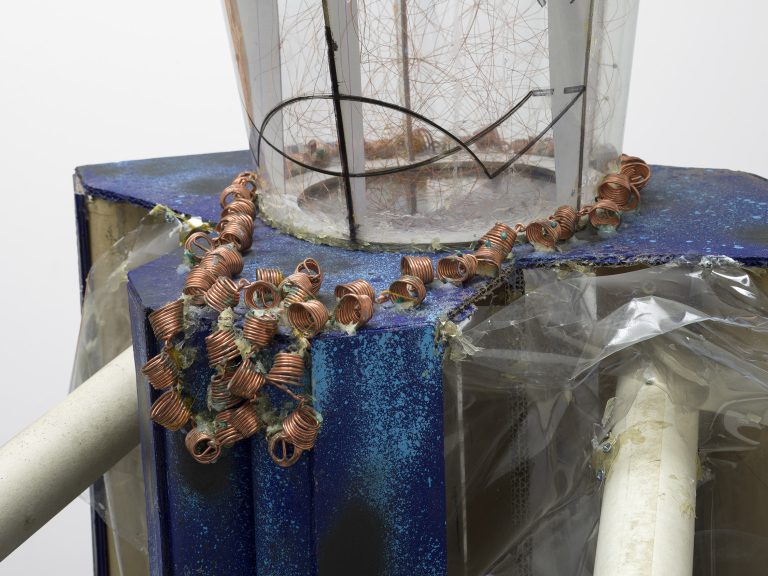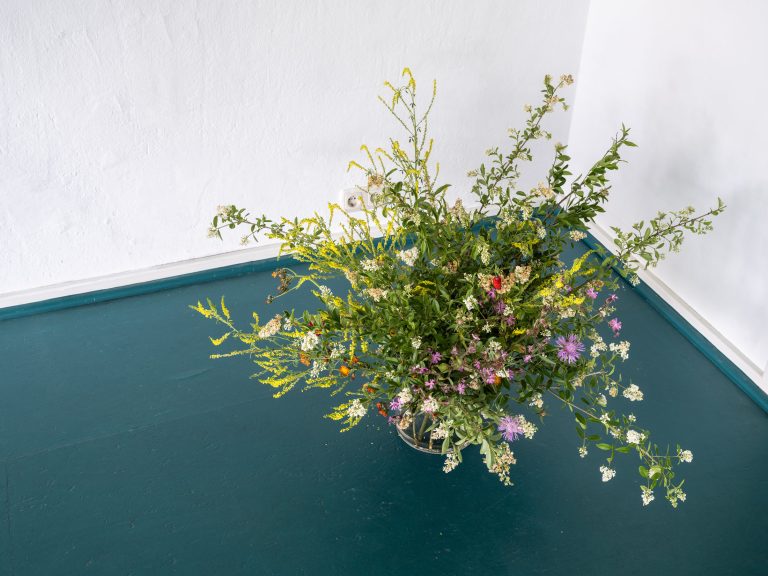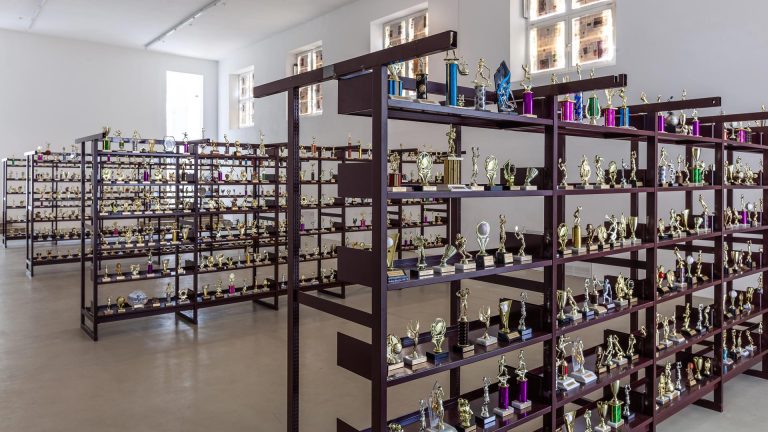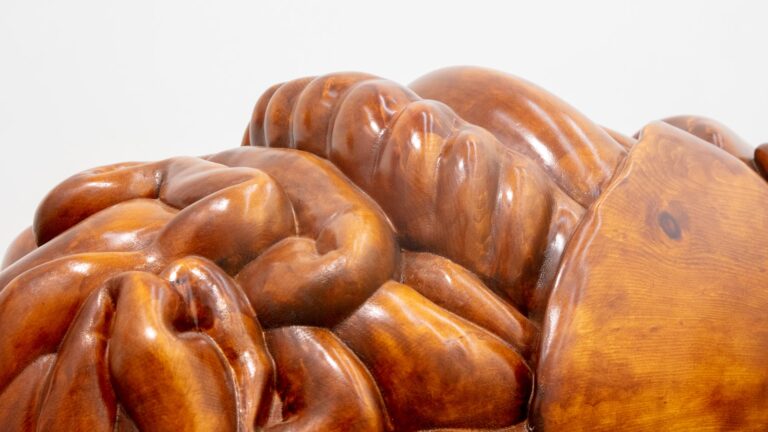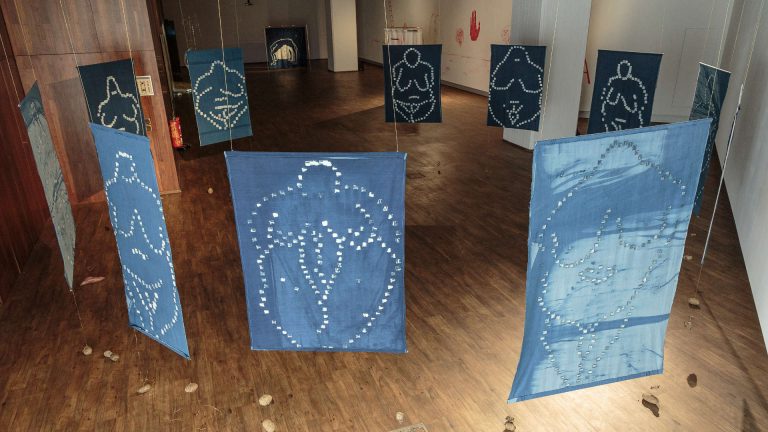Artist: Loup Sarion
Exhibition title: Milch in meinen Augen (Milk in my eyes)
Venue: Kunstverein Heppenheim, Heppnheim, Germany
Date: August 23 – September 15, 2019
Photography: all images copyright and courtesy of the artist and Kunstverein Heppenheim
Speaking in Tongues
Carina Bukuts
The tip of the tongue lies gently on the upper palate and closes the oral cavity, the vocal chords vibrate and a stream of air exits – a phoneme is produced: < l >. Phonemes to phonemes connect to generate words, to formulate sentences, to ask questions. Those movements and processes are internalized and 100 different muscles are coordinated in order to create a single sound. While phonemes are the baseline for communicating with our environment, the verbal interpretation of letters can change again and again as soon as one encounters them in another language. The best-known example is probably the English < th >. But it’s not just the sound that makes this phoneme so special, it’s also the way it’s created: the tip of the tongue presses timidly between the teeth, so that a small stream of air passes by the sides and creates a gentle lisp. It’s the only sound I know of where the tongue steps out for a brief moment, reveals itself and releases a piece of intimacy.
While the tongue only flashes forward for a brief moment, it is the protagonist in Loup Sarion’s exhibition Milch in meinen Augen (Milk in my Eyes) at Kunstverein Heppenheim. Here, four large, oversized tongues of fiberglass and synthetic resin occupy the exhibition space. Dark, black, and deep green tongues protrude from the white walls, but there is no mouth, face, or body to which they belong. Nothing protects them from foreign glances. While in everyday life we only encounter the tip of our opponent’s tongue while talking, Sarion exhibits the organ in a completely oversized length and size at the Kunstverein, thereby also referring to its multifunctionality, which goes far beyond communication skills. The tongue is at the same time a tool for determining fundamental differences in taste and ultimately the organ with which we love, kiss and experience sensuality. The sculptures are thus far more than enlargements but furthermore Sarion accomplishes a clear shift from the private to the public space.
This transfer is also reflected in the titles of the works, all of which are called Nude and only in parentheses are further classified as innocent shade / quiet saffron or iron ore / obistante cayenne. The reference to the art historical genre of the nude not only serves to assign the tongues a genre that expands the concept of sculpture, but also emphasizes the display of nudity and intimacy that the tongues symbolize. Loup Sarion thus combines the concrete corporeality of the objects with the sensuality of language, to which Roland Barthes also refers in his book A Lover’s Discourse (1977): “Language is a skin: I rub my language against the other. It is as if I had words instead of fingers, or fingers at the tip of my words. My language trembles with desire. “
At Kunstverein Heppenheim, however, this friction between languages is not only evident in the bilingual exhibition and artwork titles in German and English, but above all in the visual languages that seem to rub against each other. In addition to the tongue sculptures, Sarion built two hay columns in the exhibition space and covered the entire floor with the dry grass. In doing so, he not only breaks with the classic situation of the white cube, but also challenges another sensory organ of the viewer by covering the whole room with the warm and earthy smell of hay. Just as every spoken language follows its own distinctive prosody of melody, emphasis and tempo, the exhibition Milch in meinen Augen reveals Loup Sarion’s exceptional artistic approach, which does not hesitate to create friction but instead speaks (to us) in tongues.



















